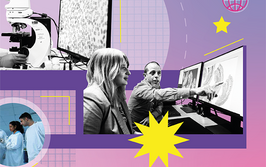Bridging the Gap
When new residents need advice in the gross room and beyond, where can they turn? Many are hesitant to go straight to faculty – and that’s where pathologists’ assistants can help.
Timothy Craig Allen, Marissa Spencer, Cory Nash, John Eckman, Mariam Molani, Adam Booth | | Longer Read
Who trains pathology residents and prepares them for a career in the laboratory? The obvious answer is “pathology faculty” – those who have traveled the same educational path years – often decades – earlier. It’s true that faculty have plenty of wisdom and experience to share with their younger counterparts, but that doesn’t mean that they are the only valuable contributors to residents’ education. In fact, residents are sometimes so intimidated by their attendings that they hesitate to ask questions or call for help. And that’s where pathologist’s assistants (PAs) come in.
PAs are responsible for gross examination, specimen processing, laboratory management, and much more. Not only that, but they can also help teach residents these vital skills – and can provide a reassuring expert resource for those who may feel anxious about consulting faculty members. Without them, many residents would find themselves lost or overwhelmed. With them, the laboratory runs smoothly – and residents find their feet in an increasingly busy diagnostic environment.
Overcoming Intimidation
PAs can provide a point of contact and reassurance between residents and faculty
By Timothy Craig Allen
As a faculty member, how do you interact with residents? How do you interact with pathologists’ assistants?
My interaction with residents is multifaceted and has a strong focus on gross examination of pathology specimens. In many cases, a diagnosis can be made on gross examination and supported or confirmed by microscopic examination. I always emphasize that, although pathologists’ assistants (PAs) are well-trained to gross specimens, it remains the resident’s responsibility to fully understand grossing technique and correlate the gross examination with the patient’s history, radiologic findings, and, ultimately, the microscopic examination. The resident may ultimately go on to hire and supervise PAs, so should master grossing technique and fully understand the reasoning behind grossing techniques. The resident must also have great respect for the PA’s skills and should learn early in residency how to professionally interact with PAs.
My interaction with PAs is also multifaceted and includes direct employment responsibilities and supervision, collaboration on developing the teaching curriculum for resident teaching, oversight of the PA’s professional relationships with laboratory and other staff and administration, and oversight of the PA’s relationships with other pathologists.
Are junior doctors hesitant to come directly to you with issues?
As an academic pathologist, it has long been obvious that residents – particularly junior residents who are very early in their residency – hesitate to speak to me or other pathology faculty directly about their daily educational concerns unless those concerns rise to a fairly high level. I understand that completely. I was the same way as a junior resident – reluctant to reveal to the faculty my lack of understanding of what I considered the “basics.” This will always be the case no matter how strongly faculty encourage communication. But that’s all right because junior residents instead usually reach out to their senior residents for help.
It is important to maintain a culture where junior residents are similarly comfortable reaching out to the team’s PA with their questions about grossing specimens. This outreach cannot be a replacement for a strong faculty presence in the resident’s grossing education, of course, but the resident’s relationship with the PA can enhance the resident’s grossing skills and, at the same time, help develop a strong professional relationship between the PA and the resident – a relationship that will lay the groundwork for successful relationships with PAs throughout the resident’s career as a practicing pathologist.
How did you handle that feeling of intimidation when you were a resident?
As a junior resident, I felt uncomfortable taking what I considered simple, basic questions to my faculty members for answers – even though I held my faculty members in high regard and believed deep down that they wouldn’t really mind. I just did not want to show my ignorance, even though no junior resident could have known the answers to those questions. My colleagues and I learned quickly to engage with our senior residents (and, later, junior residents turned to me as I progressed through residency). My training department did not include PAs at the time of my residency; however, had a PA been present, I would have reached out to them with some of my grossing questions. After all, the PA is specifically trained to have expertise in grossing specimens.
How can PAs help bridge the gap between learners and faculty?
Medicine is extremely dynamic today and pathology is changing rapidly. Pathology faculty are charged with understanding these changes, managing them, and incorporating them into residents’ training so that trainees are fully equipped to practice in ever-changing environments. Faculty time is increasingly limited and resident training time is short. In this environment, PAs can provide valuable contributions to residents’ grossing education – particularly for junior residents. These contributions do not supplant those of faculty members, but enhance the residents’ grossing experience. This is why it’s so important to establish a culture in which the PA is viewed as a strong team member with a well-defined role in educating residents.
As an example, I – a faculty member – work to maintain a culture where the resident learns directly from me how to gross pulmonary specimens. I am responsible for providing the resident with a detailed understanding of how pulmonary specimens should be grossed and, importantly, why we gross them that way. In this setting, the PA can help the resident with specific pulmonary specimens that may be more complicated than usual or that require advanced grossing skills the resident needs help to develop. My faculty colleagues and I are, of course, available to the residents for assistance – and we are happy to help – but that doesn’t mean that residents will necessarily be comfortable coming to us, or that the PA won’t be able to help in ways we cannot. The pathologist’ assistant’s role is not to supplant or replace our expertise, but to add to it.
What problems should junior doctors bring to faculty members? What problems should they bring to PAs?
The resident can, and indeed should, bring any and all questions or problems they encounter to the pathology faculty members. Each question or concern is an opportunity for the faculty member to educate the resident. However, practicalities limit those opportunities. And that’s why junior residents can and should also reach out to their senior resident colleagues. Senior resident teaching of junior residents, including in the grossing room, provides not only great opportunities for the junior residents to learn, but also for senior residents to teach – and we know that the teacher learns more just by the experience of teaching. But practicalities limit those opportunities as well. It is here that the PA can help “bridge the gap” by supporting the team’s educational responsibilities as a respected laboratory professional who can share unique expertise.
What is each person’s role in the pathology teaching laboratory?
The pathology faculty member’s role is supervisory, administrative, and educational. The faculty member is ultimately responsible for the entirety of the resident’s education, including the development of grossing expertise. The PA’s role is also multifactorial in the academic pathology department, with responsibilities that include (but are not limited to) the provision of grossing services. Ideally, the PA should perform in a culture that supports a strong, team-associated educational role so that junior residents can quickly develop strong grossing skills.
PAs have long provided grossing services in both private practice and academic settings. Academic pathology departments should develop a culture in which the PA is considered a member of the educational team and is involved in resident education in the gross room – with a very clearly defined role in supporting the pathology faculty members’ grossing principles. That role enhances the team-based philosophy that is the hallmark of a strong pathology department today, supports professional respect for the PA’s role, and reduces the tendency for PAs to be considered a scope-of-practice threat.
Timothy Craig Allen is Professor and Chair of the Department of Pathology at The University of Mississippi Medical Center, Jackson, Mississippi, USA.
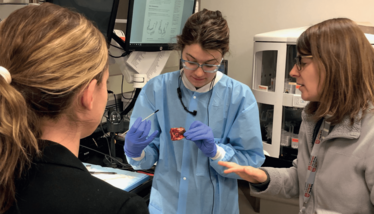
The Ideal Teacher
PAs have a key role to play in teaching residents new skills
By Marissa Spencer
Pathologists’ assistants (PAs) perform a variety of tasks in the gross room. Our main role is to provide high-quality patient care by describing the gross features of surgical specimens, sectioning specimens for submission/microscopic evaluation, and creating a dictated gross report that correlates with the gross findings. A large part of our workday revolves around obtaining clinical history, specimen photography, and special workups, including intraoperative consultations, tumor triaging, mapping diagrams, and X-ray imaging. We obtain tissue for special workups, such as flow cytometry, electron microscopy, immunofluorescence, and research/tissue banking procedures. PAs maintain protocols and equipment, perform managerial duties, and take part in preparation for laboratory accreditation inspections.
But second only to patient care is the role we play in educating those around us, including pathology residents, surgical fellows, medical students, pathologists’ assistant students, nurses, support staff, and even (sometimes) attendings. We are all colleagues with strengths in different areas. A PA’s greatest strength is describing gross features, sectioning specimens for microscopic evaluation, and creating dictated gross reports. I think that PAs working in any environment – academic or otherwise – should take a role in educating others about this aspect of patient care, and about why gross evaluation and gross pathology are so critically important for patient outcome. In an academic environment, PAs and residents can both be learners, because the beauty of pathology is that you can learn something new every day. That said, residents can learn a lot from PAs at the gross bench. It is part of our duty to ensure that, by the end of their training, residents can independently gross cases and provide the most efficient, effective workup and diagnosis.
There is nothing more rewarding to me than seeing that “lightbulb” moment when a resident sections through a specimen after understanding the orientation correctly and fully grasping the process at hand – or even makes a differential diagnosis accurately based on what they see in the gross examination. Residents come into their training “blind” in that they know very little about gross pathology (which is only minimally discussed during their medical school training). And that can be incredibly intimidating! Past residents I have trained have confessed to me that, at times, they felt lost, defeated, and, half-jokingly, “clueless.”
Naturally, most residents do not want attendings to know they feel this way! Part of our role as PAs is to help ease those fears and guide residents through their training. We can bridge the “intimidation gap” to become someone residents can confide in. It is hard to overstate the importance of establishing strong relationships with the residents you are training. As a PA, having residents that appreciate you and come to you with questions makes for optimal patient care. Why? Because residents’ understanding of gross anatomy and pathology, sectioning, and submission is critically important. Many residents are intimidated by the gross room and do not want to be there – but, as PAs, our passion for gross anatomy and pathology can overcome their uncertainty and show them just how fascinating and beautiful grossing can be. We can alleviate their worries and allow them to learn without feeling overwhelmed. That passion might even make them appreciate gross pathology as much as we do. I have seen residents afraid to ask questions of PAs or attendings, and I want to encourage them to come to us – we don’t bite! A resident who feels confident at the bench will feel even more confident at the scope signing out cases. It’s our job to nurture that confidence. After all, the laboratory is an interprofessional environment, and we must all work together as peers to ensure the best possible patient care.
Unfortunately, not all PAs are equally eager to teach residents. Why is that? Every laboratory’s goal should be an environment that fosters community and respect – but some PAs feel that teaching instead offers an opportunity for finger-pointing. For instance, what if, during sign-out, an attending disagrees with the way a gross description was worded or the way a section was submitted? Rather than take responsibility for the decision, some residents have used the PAs in their lab as a shield, claiming, “The PA told me to do it that way.” Although this is not an everyday occurrence, it’s one that my colleagues and I have experienced on more than one occasion. In a few cases, we have even been chastised and held responsible for errors made by residents whom we had been assisting.
Although many PAs are passionate about educating residents, issues like these create rifts between our two professions at exactly the career stage when the focus should be on building bridges. After a bad experience (or several), PAs might feel that attendings do not trust or respect them – and they will likely become less willing to help new residents. It’s a problem that can only be addressed if all members of the laboratory view one another as colleagues and equals. We can be valuable resources for one another, as long as we treat each other with the professional courtesy we all deserve. And that’s certainly my hope for all future relationships between residents and PAs.
Marissa Spencer is a Pathologist’s Assistant at Hartford Hospital and Adjunct Professor at the University of New Haven, Connecticut, USA, and External Marketing Subcommittee Chair at the American Association of Pathologists’ Assistants.
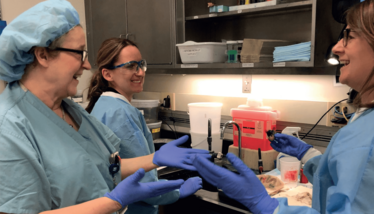
Leaders in Learning
PAs are vital contributors to resident learning and development
By Cory Nash
As a pathologists’ assistant (PA), interacting with residents and attendings is just as important a skill as my ability to gross. Some may consider people who work in pathology antisocial, confining themselves to the dark, windowless corners of a hospital basement. I don’t see it that way. In my opinion, being social and interactive – and working to develop good communication skills – is imperative for any team member in pathology. As a PA at a large academic hospital, I interact with residents and attendings on a daily basis.
One of a PA’s main responsibilities is teaching. This creates an interesting dynamic, because junior residents come into pathology as doctors – but not as “capital-D Doctors.” Their training is just beginning, and they may feel a sense of incompetence when compared with senior residents or attendings. I know some junior residents initially feel intimidated by certain attendings, either because those attendings are recognized as experts in their field and the residents don’t want to make a mistake in front of them, or because the attending gives off a certain aura. I am lucky to work with attendings who are very approachable; they have the skill of providing appropriate levels of constructive criticism while simultaneously holding someone accountable for their actions (and that means, “you made a mistake, so let us learn from this,” rather than, “you made a mistake, so you obviously don’t know what you are doing”).
It is incredibly important for attendings to understand that residents are still students. They are learning every day, and it is the attending’s responsibility to foster that learning. Even with that understanding, I still see junior residents who are hesitant to approach attendings with a question or concern. And not just residents – I’ve seen it happen with recently graduated or newly hired PAs as well. In fact, I was guilty of it myself. We are all too familiar with imposter syndrome. Only through time and experience – through making mistakes and learning from them – can we build self-confidence. Junior residents struggle with this same lack of self-confidence, and that’s where PAs can step in and provide support.
Imagine a junior resident who is grossing a specimen they have never worked on before. It’s a fairly complex specimen with multiple organs attached and adhesions that convolute the normal anatomy. The resident knows that they need to talk to the attending first to find out what kinds of sections they should take and how the attending would like the specimen grossed (preference in inking, sectioning, and so on). Before that resident contacts the attending, they can run that specimen by a PA, who can explain how they would approach the specimen and why. The PA can point out the different anatomic structures and the pros and cons of inking and sectioning a specimen one way versus another. In this way, the PA takes on a teaching role – and, by going over the specimen with a PA first, the junior resident can ask questions, work out problems, and potentially even discover new questions they didn’t even know they needed to ask! Consider it a sort of “practice run.” When the attending arrives, the resident can take the initiative and tell the attending how they think it should be grossed. The attending may or may not agree with them – but the important thing is that the junior resident stepped up and took the initiative. When you’re doing that, it’s hard not to build self-confidence. It cannot be overstated how important it is for junior residents to step outside their comfort zone and take on challenging specimens. As weird as this may sound, I am a big proponent of making mistakes. There are two things I always try to tell my residents and PA students. The first is that, no matter what mistake you make, someone has made it before you and it can be fixed. The second is that you need to be okay with making mistakes. Don’t look at them as a negative experience, but as a positive one from which you can learn and grow.
It is no secret that PAs are experts in gross pathology. It’s what we were trained in, and it’s what we do every day in the lab. I say this because, if a microscopy issue were to arise, the PA might not be the best person to contact to resolve the situation – but if the problem relates to a specimen in the gross room, the first step the junior resident should take is to contact the PA. I know most PAs have faced a litany of issues throughout their careers, some of which they never thought they would run into – and some of which they didn’t even know were possible. Through this wealth of experience, PAs have developed strategies to deal with these issues, and our input could be invaluable to a new resident.
Of course, certain problems should go straight to a senior resident or attending; these include situations that could directly affect sign-out or patient care. For instance, I once encountered a missing breast clip in a mastectomy specimen. An index lesion had been biopsied and, sure enough, there was a clip that we (a resident, another PA, and I) were able to find. No problem there. The imaging notes, however, stated that there was a second biopsy clip denoting benign findings. Unfortunately, the notes didn’t state the size of the benign area, where it was located, or what type of biopsy clip was used. We imaged the entire mastectomy in our Faxitron, and no second clip could be identified. When we contacted the surgeon to let them know, the reply was that, according to their notes, there should have been a second clip. We made sure to assert ourselves that, despite what the notes said, our own imaging showed that there was none – and we then left it to the surgeon to decide how to proceed. Nevertheless, we still decided to bring the situation to our attending’s attention. When it came time to sign out the case, there would undoubtedly have been questions about the second clip. By alerting the attending to the situation before they received the slides, we ensured that all the proper steps were taken and that the attending could continue to have confidence in our abilities in the gross room.
The attending needs to have confidence that the gross room can function properly without direct supervision, raising a question: what is the role of each person – resident, attending, and PA – in the gross room? In the past, our roles would have been one and the same: to ensure that every patient’s specimen is grossed and diagnosed in an appropriate amount of time, while at the same time providing hands-on training for residents. Unfortunately, that no longer seems to be the case. Between the increase in specimens received in the surgical pathology lab, the shortage of pathologists worldwide, and the decrease in medical students going into pathology residency, attendings are finding it harder to provide hands-on training to residents in the gross room. By necessity, they are less and less teachers of gross pathology; more and more teachers of microscopy and diagnosis.
At least in part, it’s thanks to PAs that this change can happen. Their work allows attendings to focus on microscopy and teaching residents about ever-changing diagnostic criteria, IHC stains, molecular testing, and probably a million other things that I can’t even comprehend. In this way, attendings and PAs work together in a symbiotic relationship whose main goal is to have all specimens grossed and diagnosed in an appropriate time frame while simultaneously training residents. In my opinion, this is how our roles should complement each other: with the PA teaching gross pathology, the attending teaching microscopy, and the resident learning from both.
We can use our roles to benefit one another and ensure the longevity of pathology. And it’s important to remember that they aren’t mutually exclusive; if an attending wants to offer hands-on gross pathology training, they should. We have attendings like that at my current hospital and I could not be happier. If a PA wants to learn microscopy, they should be able to learn from the attendings just like residents do. Creating a culture in which we help one another and work as a team will be of the utmost importance in the years to come. Pathology is not going to survive if one group bears all the responsibility for teaching the next generation. It is imperative that we distribute the work in the most efficient way possible to ensure that patients still receive timely diagnoses and residents still receive vital education.
Cory Nash is a Pathologists’ Assistant in the Department of Pathology at the University of Chicago, Illinois, USA.
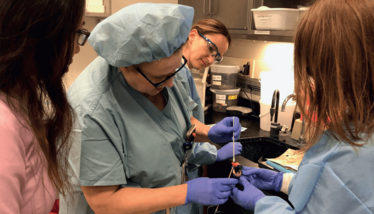
A Skill at Risk
Are residents losing interest in the gross room?
By John Eckman
As a certified pathologist’s assistant (PA), I have worked with pathology residents at two different institutions for the past 15 years. I provide their initial onboarding, followed by one-on-one training in the gross room. After a training period, I oversee the residents working in the gross room during their surgical pathology rotations. I am also on the resident candidate interview team in our department and serve on the Resident Clinical Competency Committee.
My most meaningful impact is during their first year of residency. I emphasize to them that, although I don’t replace a faculty pathologist, my job is to keep the pathologist out of the gross room until they are genuinely needed, which is why I make sure I am available for any and all questions from residents. I want them to feel comfortable asking me anything – including many (seemingly) elementary questions with which they may hesitate to interrupt a pathologist. If needed, I help prepare the resident for an encounter with the pathologist when we do call them into the gross room to discuss a particular specimen. I also try to relate to the residents during the difficult time of their training in surgical pathology, sharing with them the mishaps I have had and the criticism I have received. I tell new residents that I am familiar with the likes and dislikes of the faculty pathologists, so I can help them avoid or prepare for the few potentially unpleasant situations that can arise. I also explain that, as residents and PAs, we share a commonality: we are both grossing cases for someone else, so we face many of the same issues.
I know many PAs who work with residents, training them to gross surgicals, prepare frozen sections, prosect autopsies, and much more. We frequently share our experiences and teaching methods so that we can help each other provide the best possible training. Resident training is a frequent discussion topic at our annual conference. In addition to sharing effective teaching methods for residents, we often talk about our common experiences and some of the problems we all have. Most residents do well during training and become excellent pathologists – but some don’t and, as a group, they are pushing back on work in the gross room.
Over the last several years, we have been hearing more about residency programs that require their residents to gross far less than they once did. We hear about residents seeking limitations on the specimen types they are willing to handle, claiming that some specimens offer limited educational value. This attitude has led to residents who only do a set number of each specimen type – thus missing the value of grossing a significant volume (which would allow them to encounter some less common entities). The increase in residents seeking limitations on duty hours in the gross room and, at some institutions, refusing to cover the service when the PA is away is also concerning – and seems in direct contrast to the work ethic required in pathology (and in medicine in general). Although this trend might represent some form of job security for PAs, it is worrying; some residents may not be practice-ready should they enter a setting where the practicing pathologist performs the gross exam or is responsible for oversight of gross room staff.
A recent paper from the Association of Pathology Chairs addressed some of these issues and stated concerns that the fundamental skill of performing good gross examinations was at risk due to an emphasis on non-clinical work during training. Perhaps PAs are to blame for this to some extent; after all, in many departments and laboratories, we have replaced the pathologist in the gross room. When residents see that the faculty pathologists do not gross, they may not see the gross exam as a function they will need to master before they enter practice. Some pathologists and residents seem to lose the appreciation of the expertise required to perform high quality work in the gross room as they are further removed from that process. The ability to properly examine, dissect, and sample surgical specimens is essential to patient care, particularly when dealing with cancer resections and making observations that are used to establish accurate pathologic staging. It is a privilege to perform this work and its fundamental importance to the practice of pathology and its contribution to patient care should not be overlooked or minimized. It’s my hope that PAs and residents can form good working relationships, share skills, and learn from one another to preserve the vital art of the gross examination.
John Eckman is a Pathologist’s Assistant at Penrose St Francis Health System/Mountain States Pathology, Colorado Springs, Colorado, USA.
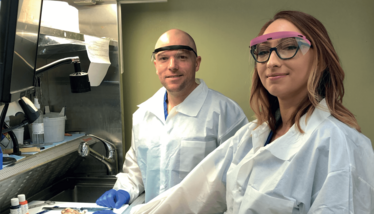
Essential Advisors
PAs are a constant expert presence in the laboratory – and in resident education
By Mariam Molani
As a resident, how do you interact with faculty members? How do you interact with pathologists’ assistants?
My interaction with faculty members is collegial, yet formal; my interaction with PAs is a little more friendly and easygoing. Because we rotate through numerous faculty members as we learn about various pathology specialties, we spend a limited amount of time with a lot of people. PAs are different – we interact with the same small group of PAs throughout our four-year residency. Our constant exposure to their knowledge and expertise allows us to get to know them on a deeper personal level early in our careers.
Have you ever been hesitant to bring a problem to a faculty member?
Regardless of how much I’ve read up on the specimen, questions often come up while I’m grossing. In the past, I’ve been hesitant to go to faculty with those questions. Sometimes, I’m coming back onto a surgical rotation after months of clinical rotations, so I need a refresher and to reboot my muscle memory. In these cases, it can be really embarrassing to ask faculty a question to which I’m already supposed to know the answer! Also, many faculty do not gross regularly and don’t frequent specimen processing facilities. And that’s where PAs come in; they are incredible teachers and have extensive knowledge of surgical specimen processing and systems management. They are skilled at anticipating issues in the gross room, histology, and specimen receiving, and they are experts at troubleshooting such issues. They also work closely with technologists and have relationships with surgeons and surgery residents – all of which is essential to effectively evaluate specimens coming into the gross room. Because we’ve known them since the moment we started residency, many residents feel more comfortable asking PAs questions before they bring an issue to a faculty member.
I think that, over time, I’ve learned to direct my questions to the person who is most intimately associated with the work or process involved. If I have a question about grossing or specimen processing, I would first direct it to a PA, whom I would consider the expert opinion. If I had a question about interpreting the histology of a particular section, I would approach faculty who signed out that type of specimen regularly.
How can PAs help to bridge the gap between learners and faculty?
Most residency programs start residents on surgical pathology, where they learn how to gross and cut frozen sections within their first month on service. PAs are the first staff with whom residents work closely as they learn the fundamentals of pathology and tissue examination. In any given hospital, there are many more pathology attendings than there are PAs. Although pathology residents move from attending to attending on various services, they always work with the same PAs, thereby creating opportunities for strong relationships and lasting rapport. It’s easy to ask someone familiar a question; it’s much harder to ask someone you are just getting to know. PAs who are friendly and patient can serve as excellent teachers for residents, and the trust that residents have in such PAs limits the intimidation that we often feel with faculty.
PAs have been essential to my learning. Pathology attendings have individual responsibilities that may not allow for time in the gross room; their offices might be far away; their workload may not allow them 45 minutes to come and explain how to process a specimen. Nevertheless, I’ve often needed help with complex specimens – and PAs have always taken the time to explain how to orient a specimen, examine its margins, and take the right sections. I once had a mandible resection with a complex tumor; although the faculty had trouble sparing time to help me with it, a PA walked me through every step and helped me communicate with the faculty member to follow up on the case.
Sometimes, the help I’ve needed has been as simple as finding lymph nodes for a colectomy. As a first-year resident, I struggled to identify small nodes amongst copious fat. It was a PA who told me about Dissect-Aid, a reagent that changes the color of lymph nodes and makes them easier to find within a specimen. PAs have also been essential to me on call. They can tell me how each surgeon likes their specimens processed, who prefers gross examinations, and who prefers lots of frozen sections. By knowing the surgeon’s preferences, I have been able to anticipate frozen sections and correctly gross specimens for my faculty. By being good communicators and having the patience to answer even our most basic questions, PAs can eliminate the “intimidation gap” between faculty and residents and serve as a valuable resource to residents.
What problems should junior doctors bring to faculty members? What problems should they bring to PAs?
PAs are intimately familiar with anatomy, specimen processing, and laboratory management. I would turn to a PA if I had a question about the correct technique for removing a radioactive seed from a lumpectomy, the anatomy of a Whipple, or what reagents are used to stain a frozen section. If I had a question about interpreting the histology of a particular section, processing a very unusual case, or a margin that would affect the staging of a specimen, I would approach faculty who would receive that specimen.
What is each person’s role in the pathology teaching laboratory?
A PA’s role is to process surgical specimens and autopsies and to facilitate communication between specimen processing laboratories, residents, and faculty. A faculty member’s role is to evaluate and diagnose patient cases and to help facilitate the processes that contribute to the preparation of cases. A resident’s role is to learn medical, technical, and management skills from both the PAs and the physicians so that they can become an effective diagnostician for the patient.
In my experience, the best PAs have been excellent communicators and extremely patient with me as I made mistakes. They have also been advocates for residents and helped to bridge communication and education gaps between the gross lab and the microscope. I learned so much from them, and I don’t believe I could have succeeded in residency without their support!
Mariam Molani is a Resident in the Department of Pathology at the University of Texas Southwestern, Dallas, Texas, USA, and the founder and CEO of LibraMed, LLC.
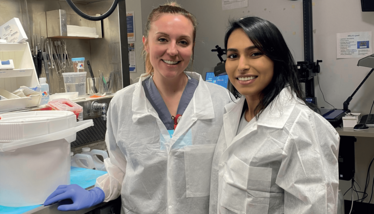
An Expert Opinion
When faced with a challenge in the gross room, PAs’ advice is invaluable
By Adam L. Booth
As a resident, how do you interact with faculty members? How do you interact with pathologists’ assistants?
Faculty members are my guides and teachers at the microscope, sharing diagnostic pearls and criteria to prepare me for independent pathology practice. In my residency program and the majority of others, trainees “preview” cases and enter the diagnosis and report independently with graded responsibility. This process may involve ordering special stains, immunohistochemistry, additional H&E slides, and sections. Once the trainee has prepared the case, they sit with the faculty member for “sign-out” at a multiheaded microscope where the slides are viewed together. Here, direct teaching occurs, diagnostic feedback is given, and lessons are learned.
The pathologists’ assistants (PAs) serve as teachers and resources in the grossing of speciments, so interaction with them largely takes place in the “gross room” – either during intraoperative consultations or while grossing surgical specimens. PAs guide junior residents as they navigate their way from simple specimens to complex resections, teaching them the appropriate steps, what to cut and where, and the necessity for particular sections to prove the presence or absence of a histopathologic finding. As a senior resident, PAs continue to serve as resources in the gross room; when I need advice regarding my approach to a complex specimen or something previously unencountered, I can speak to them for assistance.
Have you ever been hesitant to bring a problem to a faculty member?
The fabric of each pathology program is different. Faculty at my program are always available and receptive to questions, but sometimes residents (including me) still feel embarrassed to ask about things they may not know how to do. The PAs are especially helpful in that situation, giving residents an intermediary between themselves and their attendings. I believe this occurs more often with junior residents who are still getting the lay of the land and developing an understanding of personalities.
If I encountered something I didn’t understand at this point in my residency, my decisions would depend on the complexity of the case and specimen(s) and impact on patient care. If I needed to ask a quick question about approach, I would speak to the PA, because they’re easily accessible in the gross room with me and it’s convenient. However, if I had multiple questions about a complex specimen with critical sections, I would contact my faculty for their guidance. It is always better to be humble and ask than to be prideful and make an irreversible mistake when grossing.
How can PAs help to bridge the gap between learners and faculty?
PAs can be guides and teachers in the gross room. I am sure there are faculty at programs who, for reasons either real or imagined, intimidate residents. The PA is a valuable colleague to have in the gross room in that situation.They can be present for reassurance, and ready and willing to help when needed. Additionally, their patience with junior residents is a necessity, because most pathology residents have little to no experience grossing prior to starting residency.
Recently, our department established a pathologist’s assistant Master’s program in which residents have the opportunity to teach some of the systemic pathology classroom lectures. This creates a great learning community even as PAs continue to teach residents in the gross room.
What problems should junior doctors bring to faculty members? What problems should they bring to PAs?
Residents should go to faculty when faced with a complex case that may impact their ability to sign out and/or provide a diagnosis or critical aspect of the report – for example, a complicated mastectomy where the margins might be in question. I know that I am likely to consult the PA if I’m having trouble orienting a specimen. Should I ink it this way or that? How should I cut? PAs are also invaluable for the more nebulous “something just does not look quite right.” When that happens, I always want to get their expert opinion.
What is each person’s role in the pathology teaching laboratory?
Faculty members are ultimately responsible for the case, because it’s their name that accompanies the diagnosis line. In addition, they lead the laboratory, both literally and figuratively; they are often the Laboratory and Medical Directors of the lab.
In my experience, PAs play an important role in the laboratory and gross room, handling the routine challenges that arise throughout the day, such as coordinating the grossing of specimens or maintaining contact with the operating rooms. At my program, the resident and fellow on call for intraoperative consultations (frozens) meets with the head PA first thing in the morning to discuss the scheduled operations and what we can expect from them.
Residents play a unique role that spans the breadth between trainee and eventual laboratory leader. Junior residents are focused on learning proper grossing technique, whereas senior residents are expected to take on more responsibility with regard to handling problems when they arise and helping junior residents. Despite our individual roles, everyone is working on the same team to provide the best possible care for our patients.
I’m very grateful to have PAs in the laboratory to help evaluate and gross specimens – and also to teach me and my fellow residents the finer points of gross examination!
Adam L. Booth is past Chief Resident at the University of Texas Medical Branch, Galveston, Texas, a 2020/21 GI/Liver Fellow at Beth Israel Deaconess Medical Center, Harvard Medical School, Boston, Massachusetts, USA, and a Top 5 Honoree in ASCP’s 40 Under Forty 2019.
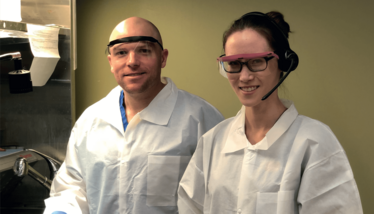
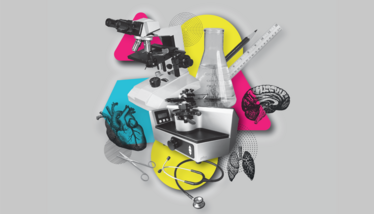
Timothy Craig Allen is Professor and Chair of the Department of Pathology at The University of Mississippi Medical Center, Jackson, USA
Pathologist’s Assistant at Hartford Hospital and Adjunct Professor at the University of New Haven, Connecticut, USA, and External Marketing Subcommittee Chair at the American Association of Pathologists’ Assistants.
Pathologists’ assistant in the Department of Pathology at the University of Chicago, USA.
Pathologist’s Assistant at Penrose St Francis Health System/Mountain States Pathology, Colorado Springs, Colorado, USA.
Resident in the Department of Pathology at the University of Texas Southwestern, Dallas, Texas, USA, and the founder and CEO of LibraMed, LLC.
Adam L. Booth is a Gastrointestinal/Liver Fellow at Beth Israel Deaconess Medical Center, Boston, Massachusetts, USA.








